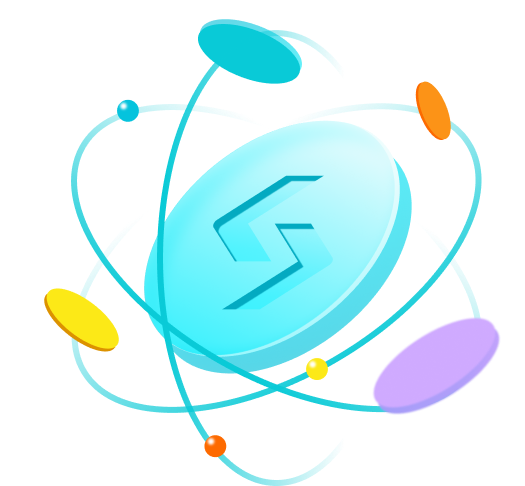Where and how to buy Litecoin in Faroe Islands
Step-by-step guide
Step 1: Create a Bitget account.
Step 2: Complete Bitget's identity verification.
Step 3: Place a Litecoin order through any of the various payment options provided.
 Credit/Debit in the Buy Crypto tab of the Bitget app
Credit/Debit in the Buy Crypto tab of the Bitget app Credit/Debit in the Buy Crypto tab of the Bitget website
Credit/Debit in the Buy Crypto tab of the Bitget website Add a new card to complete your payment on the Bitget app
Add a new card to complete your payment on the Bitget app Enter your bank card details to complete your payment on the Bitget website
Enter your bank card details to complete your payment on the Bitget website


Step 4:Monitor Litecoin in your Bitget spot account

Alternative methods to obtain Litecoin in Faroe Islands
Convert crypto to Litecoin with Bitget Convert

Swap on-chain assets to Litecoin with Bitget Swap
Methods to obtain Litecoin for free

Buy other cryptos
Buy Litecoin in a different country


How to buy Litecoin in other countries?
What can you do with Litecoin?

Store/Hold Litecoin
Many users hold on to their Litecoin with the expectation of it increasing in value. You can store your LTC safely on your Bitget account or on our crypto wallet app BG Wallet, the most user-friendly and secure mobile wallet.

Trade Litecoin
You can trade Litecoin for 150+ cryptocurrencies on Bitget’s industry-leading, fast, and secure trading platform. Bitget offers many trading pairs for Litecoin trading to meet your needs.

Send Litecoin
Yes, Bitget allows you to easily transfer value around the world, fast. You can buy Litecoin online and send to anyone and anywhere with their Litecoin address.

Spend Litecoin
You can also buy goods and services with your Litecoin. More and more vendors and retailers accept Litecoin every day.

Donate Litecoin
Bitget Charity accepts Litecoin donations for global projects that aim to improve the lives of people in the bottom billion. You can donate Litecoin so no one misses out on the growth made possible by blockchain.

Learn More About Litecoin
You can read more in-depth articles on Litecoin from Bitget Research and study how cryptocurrencies like Litecoin work on Bitget Academy
Market stats to assist in determining optimal times for purchasing Litecoin
What is Litecoin (LTC)?
Litecoin is a decentralized open-source blockchain and is widely considered the first successful alternative coin (or altcoin) in the market. Technically, Litecoin was not the first altcoin to exist in the market; there were many that came before Litecoin, but all of them died soon because they were not convincing enough so that crypto users could adopt them en mass. Launched in 2011, Litecoin has the aim to be “the silver to Bitcoin’s gold”. Though whether the goal of Litecoin is achieved is up for debate, it is no doubt among the biggest cryptocurrencies by market capitalization.
Litecoin was a hard fork from Bitcoin that was created to remedy the shortcomings of the original. The major differences of Litecoin are that
(1) it was fairlaunched,
(2) block is generated in less time,
(3) total supply of token is increased,
(4) different hashing algorithm, and
(5) different GUI (graphic user interface).
These technical improvements lead to faster speed, lower fee, and more accessible for the masses.
Regarding the creator of Litecoin, he is an MIT graduate and former Google engineer, Charlie Lee. Lee invented Litecoin as “mainly a fun side project” and got a job at Coinbase not long after. However, in 2017, he quit Coinbase to work on Litecoin full-time.
How Litecoin (LTC) Works
Litecoin is one of the few popular cryptocurrencies that still use the PoW consensus algorithm because PoW is often criticized for huge energy consumption, low speed, and lack of scalability. Yet, the PoW consensus of Litecoin is quite different. Instead of using the SHA-256 hashing algorithm of Bitcoin, Litecoin implements a different hashing algorithm called Scrypt. It has a special time-memory trade-off to enhance the decentralization in mining and avoid the situation where a few miners with better computing power claim too many tokens. Basically speaking, a miner can increase speed while having to use more memory, or they can use less memory while doing more work and taking longer. This means that it would cost either a lot of time or a lot of resources to perform operations on Litecoin, thus making a large-scale attack much less likely. In fact, Litecoin has not had any major exploits.
Moreover, this inherent time-memory compromise of Scrypt allows easier mining for those with limited computing power. In Litecoin, custom hardware does not necessarily have the edge over non-custom hardware. For example, mining Bitcoin with a GPU is twenty times faster than with a CPU (a more general-purpose hardware), while mining Litecoin with a GPU is only ten times faster than with a CPU.
Other than the fundamental difference in hashing algorithm, Litecoin has each block added every 2.5 minute instead of every 10 minute like Bitcoin. This means that transactions of Litecoin are technically processed four times faster than in Bitcoin.
How Many LTC Tokens Are There in Circulation?
The main token of the Litecoin network has the ticker LTC. This token has a total supply of 84,000,000 to ensure that the last LTC is mined at the same time as when the last Bitcoin is mined. At the moment, there are 71,224,181.28 LTC in circulation.
LTC implements a halving mechanism to control inflation. Yet to make Litecoin’s halving event happen at roughly the same time as Bitcoin's, 840,000 blocks must pass before each halving event on Litecoin while the number is 210,000 on Bitcoin. LTC has gone through two halving events, the first one in 2015 and the second one in 2019. At the beginning, each block rewarded 50 LTC, then decreased to 25 LTC and 12.5 LTC after each halving. Currently, the reward for mining is 12.5 LTC per block. The next halving event of LTC will happen in 2023 and the mining reward per block will be reduced to 6.25 LTC then.
How to Buy Litecoin (LTC)
Consider investing in Litecoin (LTC)? It only takes 2 minutes to create an account on Bitget and start trading LTC.
Check out the available LTC trading pairs on Bitget!
Futures Market
Spot Market
Litecoin Resources
Buy Litecoin in Faroe Islands with Bitget
How to safely store your Litecoin
- Sign up and transfer LTC to your Bitget account.
- Alternatively, use Bitget Wallet as a self-custody solution for your LTC.
How to withdraw Litecoin with Bitget's hassle-free withdrawal process
LTC to local currency
Crypto calculator- 1
- 2
- 3
- 4
- 5













